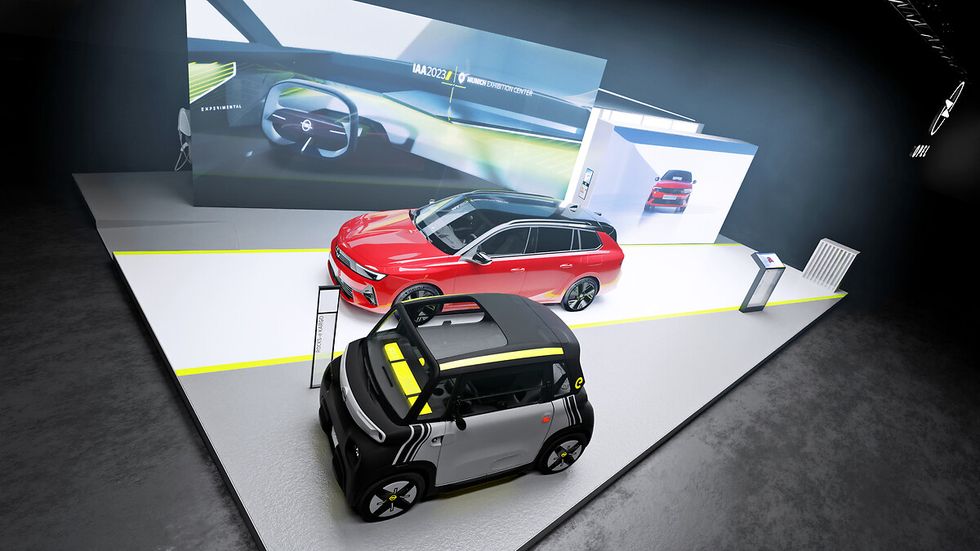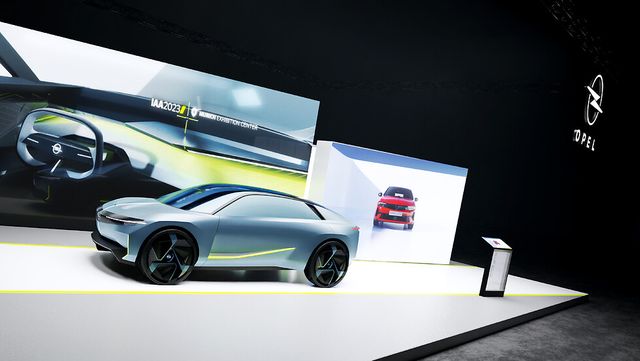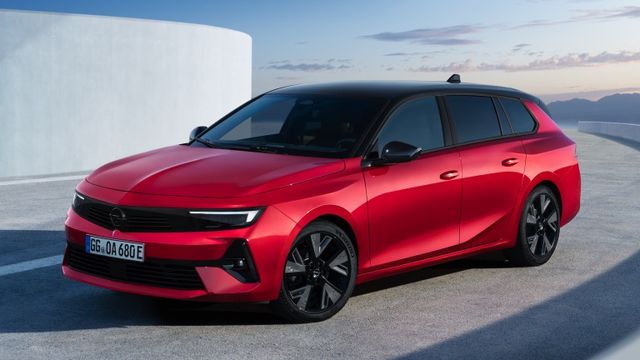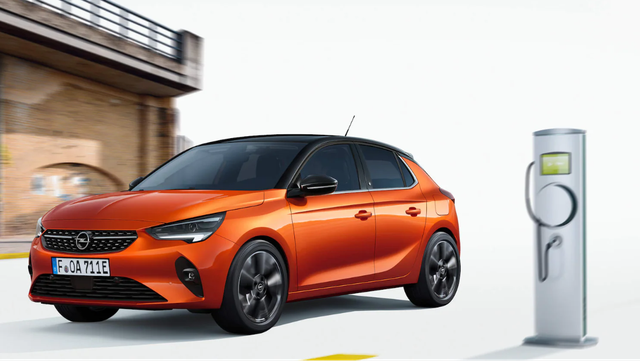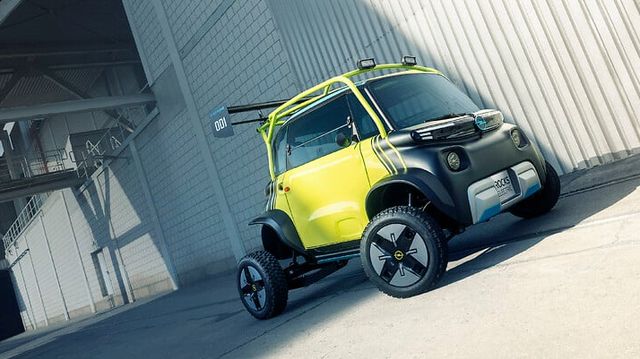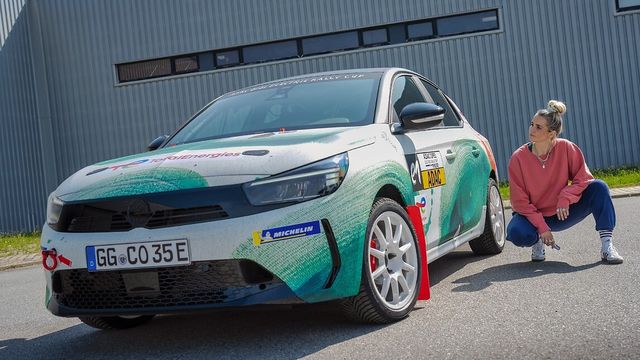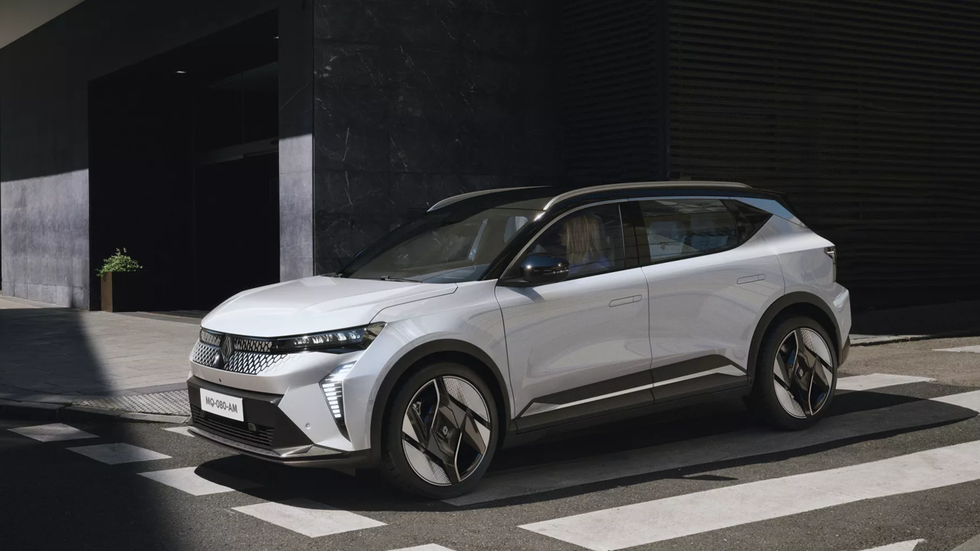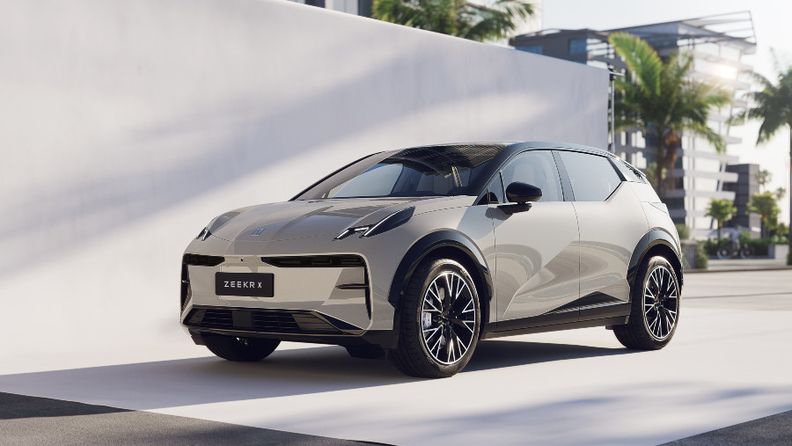There are good reasons why our Federal government keeps us from buying interesting cars from other countries. There are safety standards, emissions standards, and protectionist hypocrisies that must be guarded at all costs so that senators in certain states can keep getting reelected.
Imagine the total chaos that would ensue if you were to actually drive through Grosse Point Woods in a Dongfeng Forthing U-Tour V9. Traffic madness! Dogs marrying cats!
We can’t have that.
So for now, you’re just going to have to settle for looking at these various wild and sometimes weird wheeled things from the IAA Munich on these pages here and imagine what a world of truly free trade would be like.
Sure, the Dongfeng might decapitate you in even the most minor fender bender, but wouldn’t it be cool to take that risk just so you can tell all your buddies, “Yeah, that there’s mah Dongfeng out there in the parking lot.” Sure it would!
MG Cyberster
Morris Garages was founded 99 years ago in Oxford, UK, and since then MG has brought forth upon these continents hundreds of thousands of fun, affordable sports cars. Perhaps you had one in high school. Most famous, perhaps, were the MGA and MGB models of the 1950s through 1970s. Some of those started when you turned the key. Some did not.
The company is now owned by the Shanghai Automotive Industry Corporation Motor Corporation Limited, or SAIC for short (yes, it says corporation twice right in the name). MG has been making electric crossover utility vehicles lately. A couple months ago SAIC announced that it would be using the same IM Motors electric car platform as Audi. One of those IM Motors cars is surely this, the MG Cyberster.
“The new roadster marks a much-anticipated return to sports car production by MG as it begins to celebrate its centenary,” MG said.
Published reports say it’ll do 0-60 mph in under 3.0 seconds and cost $62,500 when it goes on sale in the UK next summer. Wouldn’t you buy one of these if they were sold over here?
Cupra DarkRebel Concept
Cupra is a higher-priced spin-off brand of Seat, which in turn is owned by VW. Cupra will launch three new models in the next two years: the all-electric Tavascan midsize SUV, the midsize Terramar SUV based on the Audi A3, and the Raval small electric hatchback.
But the cool Cupra of IAA was the DarkRebel electric concept, revealed at VW’s big program the night before the show started. Cupra calls it a “shooting brake sportscar” that “seamlessly blends the virtual and physical worlds.”
It was created using more than 270,000 images from the Cupra Tribe configurator, which was entirely online and digital. Officially, the Cupra Tribe is an online community of “…change setters, people who share customs, values, fashions, spirit, and attitude,” according to parent company Seat’s media center.
To make the DarkRebel, Cupra took all the Tribe’s data and converted it into the 3D concept you see here. That’s their story, anyway.
“The result is a 100% electric two-seat sports car with a shooting brake architecture that reflects the passion and disruptive mindset of the CUPRA brand,” the carmaker said.
The concept is 177 inches long, 87 inches wide, and 51 inches high when its doors are open, or roughly the size of a Nissan Versa, but miles away.
This Cupra stuff is not all fantasy, since Cupra and Seat’s CEO Wayne Grifffiths said a U.S. market presence is something the brand is still working on. If Cupra did enter our showrooms, it would not be with the DarkRebel but with a large SUV.
“Such SUVs are available within the Volkswagen group product portfolio,” Griffiths told Automotive News Europe. “We’re working on all the issues and we’re moving ahead in a positive direction, but we can’t confirm today that from a certain date we’ll go to the U.S.”
Whole Bunch of Opels
After 90 years of GM ownership, Opel was sold to Stellantis in 2017. And if GM couldn’t make any money selling rebadged Opels in the U.S., it’s not likely Stellantis will be able to, either, especially not small, inexpensive electric cars.
Too bad, because some of these look kinda cute. One is a concept, two are for sale now, and all are electric.
Opel Experimental
This concept, like all concepts, gives a hint at what we might see in future Opels. Its full, legal name is Opel Experimental: Visionary concept car. Opel has said it will sell only EVs by 2028, and that it’ll sell one that stickers at under €25,000, or about $27,000, not counting any incentives, by 2026. So we can assume this concept is electric.
“With purely electric platforms from Stellantis, we will be able to offer prices that will allow us to touch a far wider audience,” Opel/Vauxhall CEO Florian Huettl said.
Whether any version of that $27,000 EV would ever make it to the U.S. was left unsaid.
Opel Astra Sports Tourer Electric
The Opel Astra is a compact five-seater that’s 167 inches long, 67 inches wide, and just under 100 inches in wheelbase, or about the size of an old Ford Tempo, Mk6 Golf, or modern Mini Clubman.
In its gasoline form it comes with 1.6- and 1.8-liter fours. In the electric form you see here it offers 156 hp, good enough to move its 3880 pounds of curb weight to a blistering top speed of 106 mph. It could go about 231 miles on the U.S. SAE range.
Opel Corsa Electric
The Corsa Electric comes with a choice of two all-electric drivetrains: a new option with 156 hp and up to 250 miles range as well as the proven variant with 136 hp and up to 219 miles range according to European WLTP, cycle, or about 195 miles EPA.
Opel Rocks e-XTREME and Rocks Electric KARGO
The one-off Rocks e‑XTREME demonstrates what Opel calls a fun-loving approach to quadricycles with its distinctively outward-facing wheels for a wide, secure stance, double wishbones at the front, plus a bright yellow roll bar
The Rocks Electric KARGO addresses very different needs. Only 95 inches long, 55 inches wide, and 60 inches tall, the Rocks Electric KARGO offers professionals more than over 14 cubic feet of flexible cargo volume. With its turning circle of only 23.6 feet, the light motor vehicle can manuver down the narrowest alleys.
Together with the electric driving range of up to 46.6 miles, this makes it ideal for delivering everything from packages to pizza, especially in cities.
Opel Corsa Rally Electric
It is not stuck in the ‘80s, those are colors Germans like! The Corsa Rally Electric is green, white, pink, and red, making it an Opel Art Car of sorts.
Opel and ADAC, Europe’s largest automobile club, have been cooperating in motorsports for over a decade and extended their partnership until 2024 earlier this year. Opel says the ADAC Opel Electric Rally Cup is the world’s first electric one-make rally cup and is a prime example of sustainable motorsports.
Renault Scenic E-Tech Electric
When the Renault Scenic debuted in 1996, it was a sort of mini-minivan, a new take on family transportation that was both practical and affordable.
Now it, like all things automotive, has grown and morphed into a crossover utility vehicle. Renault’s Fabrice Cambolive, CEO, Renault brand explique:
“In 1996, Scenic was a new object that reinvented the rules and modernised family cars. All-new Scenic E-Tech electric follows this path. It’s an all-rounder electric car, designed with sustainability at the core, capable of travelling long distances. It offers outstanding interior space while remaining compact, brightness, comfort and state-of-the-art connectivity.”
Even as an electric crossover, the Scenic E-Tech Electric manages an impressive 343 miles range on the SAE scale, which is pretty good considering it has only an 82-kWh battery and 220-hp electric motor. Will it ever come to the U.S.? The notion never even came up.
Renault Clio E-Tech Hybrid
Think of the Clio as the Golf and GTI of Renault. Buyers worldwide (except in the U.S.) love them, snatching up 16 million of them since the car’s debut in 1990. It hasn’t made the leap to all-electric yet, but Renault did take the opportunity to introduce the Clio Hybrid.
The car is pretty efficient, cranking out a claimed 56 mpg (4.2 L/100km) while making 145 hp. While the Clio sells as close as Mexico, it has yet to make the drive across the border.
Zeekr X
This one isn’t quite as far-fetched as it may seem. Zeekr is an all-EV brand owned by Geely, which also owns Polestar and Volvo. It used the IAA Munich to launch itself into the luxury electric vehicle market in Europe, where it will go motor-to-motor against Tesla and whatever other upstart company will fill that space, in addition to legacy brands going EV like Mercedes, BMW and Audi.
The Zeekr X you see here, and which was shown in Munich, is a compact SUV, but Zeekr will follow that with the 001 mid-size crossover and then “several models in the pipeline.” If nothing else, we can now use it when we say, “Everything from Abarth to Zeekr.”
Do you wish we could get any car we wanted in the U.S.? Let us know in the comments.

Mark Vaughn grew up in a Ford family and spent many hours holding a trouble light over a straight-six miraculously fed by a single-barrel carburetor while his father cursed Ford, all its products and everyone who ever worked there. This was his introduction to objective automotive criticism. He started writing for City News Service in Los Angeles, then moved to Europe and became editor of a car magazine called, creatively, Auto. He decided Auto should cover Formula 1, sports prototypes and touring cars—no one stopped him! From there he interviewed with Autoweek at the 1989 Frankfurt motor show and has been with us ever since.
Read the full article here




